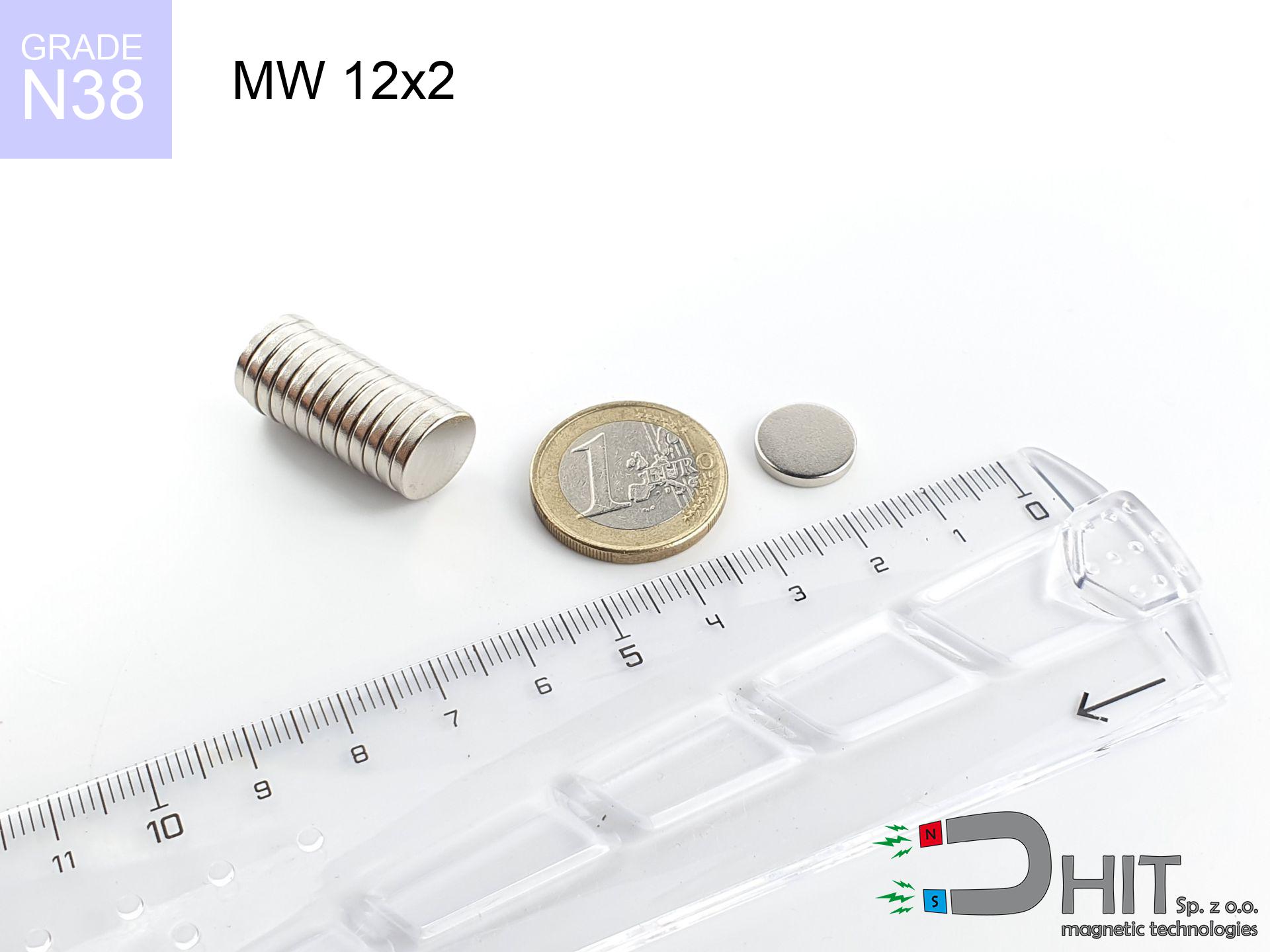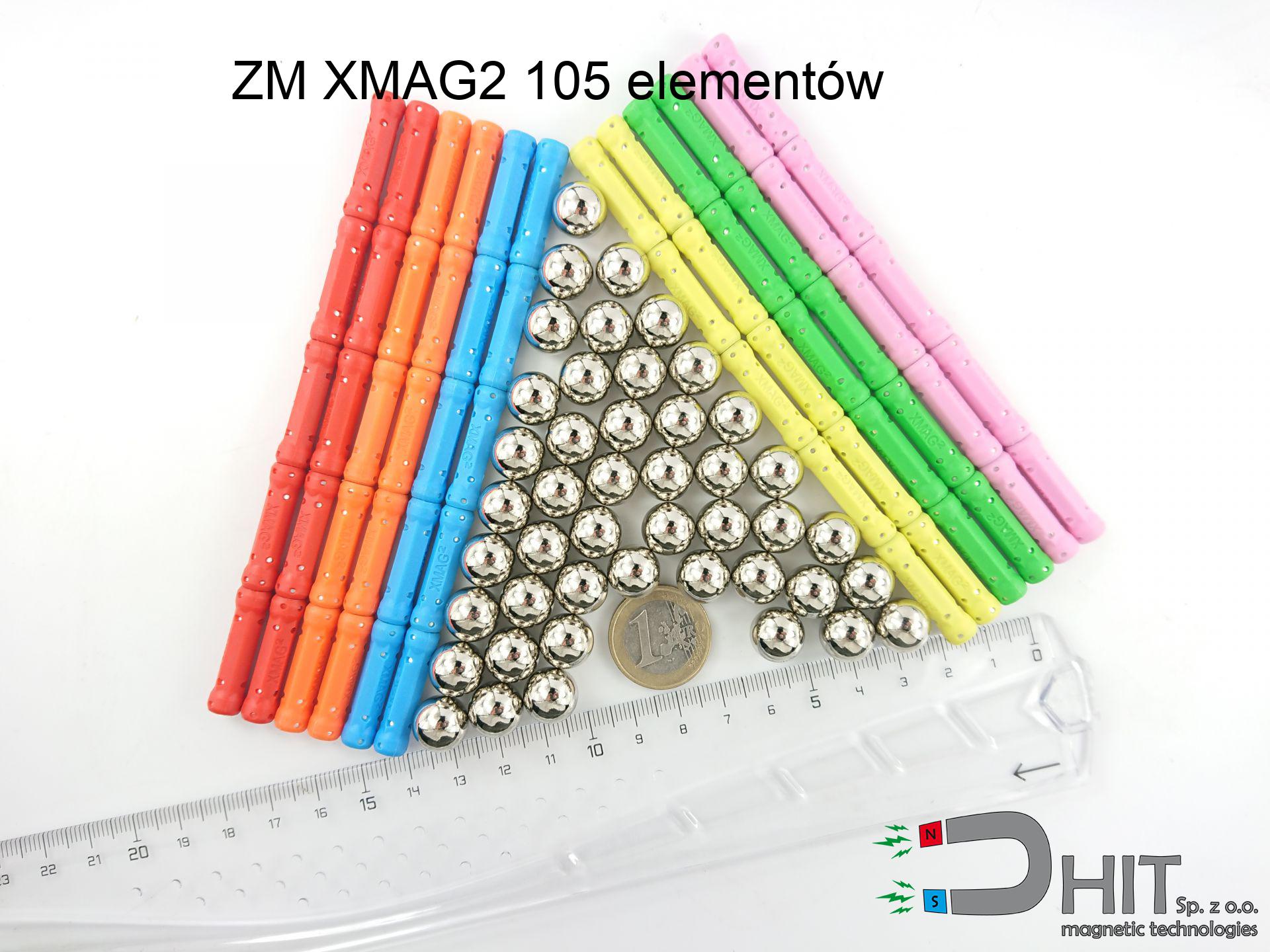SM 25x375 [2xM8] / N42 - magnetic separator
magnetic separator
Catalog no 130351
GTIN/EAN: 5906301812999
Diameter Ø
25 mm [±1 mm]
Height
375 mm [±1 mm]
Weight
1460 g
Magnetic Flux
~ 6 500 Gauss [±5%]
1057.80 ZŁ with VAT / pcs + price for transport
860.00 ZŁ net + 23% VAT / pcs
bulk discounts:
Need more?
Call us now
+48 888 99 98 98
or get in touch by means of
our online form
the contact form page.
Specifications along with shape of magnets can be calculated with our
magnetic calculator.
Orders submitted before 14:00 will be dispatched today!
Technical parameters of the product - SM 25x375 [2xM8] / N42 - magnetic separator
Specification / characteristics - SM 25x375 [2xM8] / N42 - magnetic separator
| properties | values |
|---|---|
| Cat. no. | 130351 |
| GTIN/EAN | 5906301812999 |
| Production/Distribution | Dhit sp. z o.o. |
| Country of origin | Poland / China / Germany |
| Customs code | 85059029 |
| Diameter Ø | 25 mm [±1 mm] |
| Height | 375 mm [±1 mm] |
| Weight | 1460 g |
| Material Type | Stainless steel AISI 304 / A2 |
| Magnetic Flux | ~ 6 500 Gauss [±5%] |
| Size/Mount Quantity | 2xM8 |
| Polarity | circumferential - 14 poles |
| Casing Tube Thickness | 1 mm |
| Manufacturing Tolerance | ±1 mm |
Magnetic properties of material N42
| properties | values | units |
|---|---|---|
| remenance Br [min. - max.] ? | 12.9-13.2 | kGs |
| remenance Br [min. - max.] ? | 1290-1320 | mT |
| coercivity bHc ? | 10.8-12.0 | kOe |
| coercivity bHc ? | 860-955 | kA/m |
| actual internal force iHc | ≥ 12 | kOe |
| actual internal force iHc | ≥ 955 | kA/m |
| energy density [min. - max.] ? | 40-42 | BH max MGOe |
| energy density [min. - max.] ? | 318-334 | BH max KJ/m |
| max. temperature ? | ≤ 80 | °C |
Physical properties of sintered neodymium magnets Nd2Fe14B at 20°C
| properties | values | units |
|---|---|---|
| Vickers hardness | ≥550 | Hv |
| Density | ≥7.4 | g/cm3 |
| Curie Temperature TC | 312 - 380 | °C |
| Curie Temperature TF | 593 - 716 | °F |
| Specific resistance | 150 | μΩ⋅cm |
| Bending strength | 250 | MPa |
| Compressive strength | 1000~1100 | MPa |
| Thermal expansion parallel (∥) to orientation (M) | (3-4) x 10-6 | °C-1 |
| Thermal expansion perpendicular (⊥) to orientation (M) | -(1-3) x 10-6 | °C-1 |
| Young's modulus | 1.7 x 104 | kg/mm² |
Table 1: Rod construction
SM 25x375 [2xM8] / N42
| Parameter | Value | Description / Unit |
|---|---|---|
| Diameter (Ø) | 25 | mm |
| Total length | 375 | mm (L) |
| Active length | 339 | mm |
| Section count | 14 | modules |
| Dead zone | 36 | mm (2x 18mm starter) |
| Weight (est.) | ~1399 | g |
| Active area | 266 | cm² (Area) |
| Housing material | AISI 304 | 1.4301 (Inox) |
| Surface finish | Ra < 0.8 µm | Polished |
| Temp. class | 80°C | Standard (N) |
| Force loss (at max °C) | -12.8% | Reversible loss (physics) |
| Force (calculated) | 10.6 | kg (theor.) |
| Induction (surface) | ~6 500 | Gauss (Max) |
Chart 2: Field profile (14 sections)
Chart 3: Temperature performance
Material specification
| iron (Fe) | 64% – 68% |
| neodymium (Nd) | 29% – 32% |
| boron (B) | 1.1% – 1.2% |
| dysprosium (Dy) | 0.5% – 2.0% |
| coating (Ni-Cu-Ni) | < 0.05% |
Sustainability
| recyclability (EoL) | 100% |
| recycled raw materials | ~10% (pre-cons) |
| carbon footprint | low / zredukowany |
| waste code (EWC) | 16 02 16 |
Check out more deals
Strengths and weaknesses of rare earth magnets.
Benefits
- They virtually do not lose strength, because even after 10 years the performance loss is only ~1% (based on calculations),
- Magnets effectively protect themselves against loss of magnetization caused by ambient magnetic noise,
- By using a shiny coating of gold, the element presents an professional look,
- Magnetic induction on the surface of the magnet is impressive,
- Due to their durability and thermal resistance, neodymium magnets can operate (depending on the shape) even at high temperatures reaching 230°C or more...
- Thanks to flexibility in constructing and the capacity to modify to client solutions,
- Versatile presence in future technologies – they are commonly used in hard drives, motor assemblies, precision medical tools, and other advanced devices.
- Relatively small size with high pulling force – neodymium magnets offer impressive pulling force in small dimensions, which enables their usage in small systems
Cons
- To avoid cracks upon strong impacts, we recommend using special steel holders. Such a solution secures the magnet and simultaneously increases its durability.
- When exposed to high temperature, neodymium magnets experience a drop in strength. Often, when the temperature exceeds 80°C, their strength decreases (depending on the size and shape of the magnet). For those who need magnets for extreme conditions, we offer [AH] versions withstanding up to 230°C
- They rust in a humid environment - during use outdoors we suggest using waterproof magnets e.g. in rubber, plastic
- Due to limitations in realizing threads and complex shapes in magnets, we recommend using casing - magnetic mechanism.
- Health risk resulting from small fragments of magnets are risky, if swallowed, which gains importance in the context of child health protection. Furthermore, tiny parts of these magnets are able to complicate diagnosis medical when they are in the body.
- With budget limitations the cost of neodymium magnets is a challenge,
Holding force characteristics
Magnetic strength at its maximum – what affects it?
- on a block made of mild steel, optimally conducting the magnetic field
- possessing a massiveness of at least 10 mm to ensure full flux closure
- with an ground contact surface
- under conditions of ideal adhesion (metal-to-metal)
- under perpendicular application of breakaway force (90-degree angle)
- at room temperature
Determinants of lifting force in real conditions
- Distance (betwixt the magnet and the plate), since even a tiny clearance (e.g. 0.5 mm) leads to a reduction in force by up to 50% (this also applies to paint, corrosion or dirt).
- Force direction – catalog parameter refers to detachment vertically. When slipping, the magnet holds much less (often approx. 20-30% of nominal force).
- Plate thickness – insufficiently thick sheet causes magnetic saturation, causing part of the flux to be escaped to the other side.
- Material type – the best choice is high-permeability steel. Cast iron may have worse magnetic properties.
- Surface quality – the more even the surface, the larger the contact zone and higher the lifting capacity. Roughness acts like micro-gaps.
- Temperature – temperature increase results in weakening of force. It is worth remembering the thermal limit for a given model.
Lifting capacity testing was performed on a smooth plate of optimal thickness, under a perpendicular pulling force, whereas under attempts to slide the magnet the load capacity is reduced by as much as 75%. Moreover, even a small distance between the magnet’s surface and the plate decreases the holding force.
Precautions when working with NdFeB magnets
Operating temperature
Watch the temperature. Exposing the magnet above 80 degrees Celsius will destroy its magnetic structure and pulling force.
Allergic reactions
Medical facts indicate that nickel (the usual finish) is a potent allergen. If you have an allergy, prevent touching magnets with bare hands and select coated magnets.
Phone sensors
An intense magnetic field disrupts the functioning of magnetometers in smartphones and navigation systems. Keep magnets near a device to avoid breaking the sensors.
Powerful field
Before use, read the rules. Sudden snapping can break the magnet or hurt your hand. Think ahead.
Mechanical processing
Fire hazard: Neodymium dust is highly flammable. Avoid machining magnets in home conditions as this may cause fire.
Shattering risk
NdFeB magnets are ceramic materials, which means they are prone to chipping. Collision of two magnets leads to them breaking into shards.
Serious injuries
Pinching hazard: The attraction force is so great that it can result in hematomas, crushing, and broken bones. Protective gloves are recommended.
Do not give to children
Absolutely store magnets out of reach of children. Choking hazard is high, and the effects of magnets clamping inside the body are tragic.
Warning for heart patients
For implant holders: Strong magnetic fields affect medical devices. Maintain at least 30 cm distance or ask another person to handle the magnets.
Cards and drives
Do not bring magnets near a wallet, laptop, or screen. The magnetism can irreversibly ruin these devices and erase data from cards.

![Separation magnetic rod SM 25x375 [2xM8] / N42 Separation magnetic rod SM 25x375 [2xM8] / N42](https://cdn3.dhit.pl/graphics/banners/magnet.webp)
![SM 25x375 [2xM8] / N42 - magnetic separator](https://cdn3.dhit.pl/graphics/products/sm-25x375-2xm8-feg.jpg)





